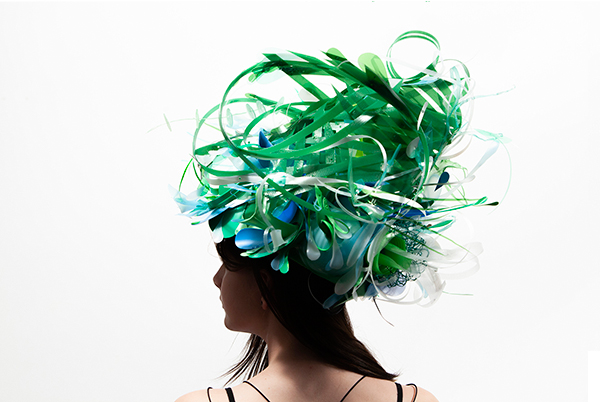
AN ARTIST RESCUES FROM THE TRASH A RICH HARVEST OF ART-MAKING MATERIALS
by Edward M. Gómez
When it comes to items made of plastic, Aurora Robson never met a thrown-away bottle, bottle cap, packing tie, industrial part, or interesting-looking packaging component she hasn’t liked — or for which she has not been able to find some worthy use as raw material for her highly original, assemblage-sculpture art.

Robson was born in Toronto in 1972 and moved to New York City when she was 18 years old. There, she studied metal welding, became a certified welder, and began making metal sculptures. Although, earlier, she had not finished high school, she passed the entrance exams for admission to Columbia University, where she earned an undergraduate degree in art history and visual art, graduating with honors. She studied with the artist Jon Kessler, who was known for his mixed-media, kinetic works combining analog and digital components. Kessler’s art often critiqued technology itself.
Robson once noted, “Kessler taught me that art about art was boring.” More recently, she observed, “I’m interested in the idea of learning through serious and playful inquiry as opposed to tortuous drudgery or other ways of learning. I’m interested in art as serious play and as a form of cultural service.”
to read the whole article.


